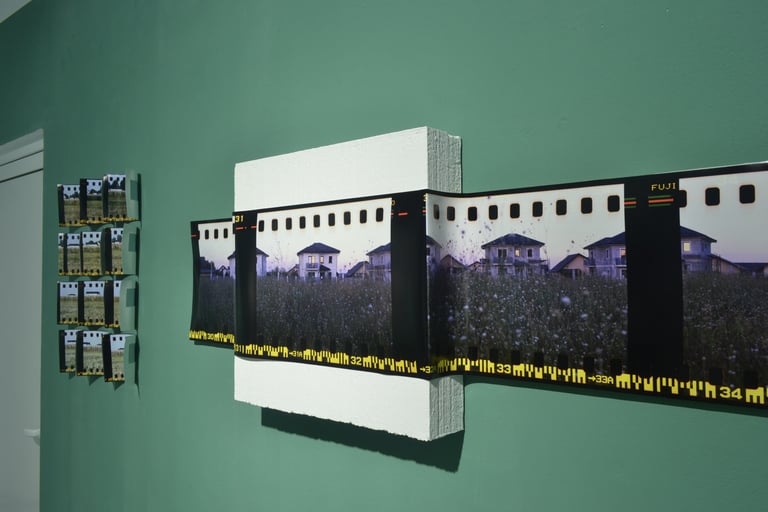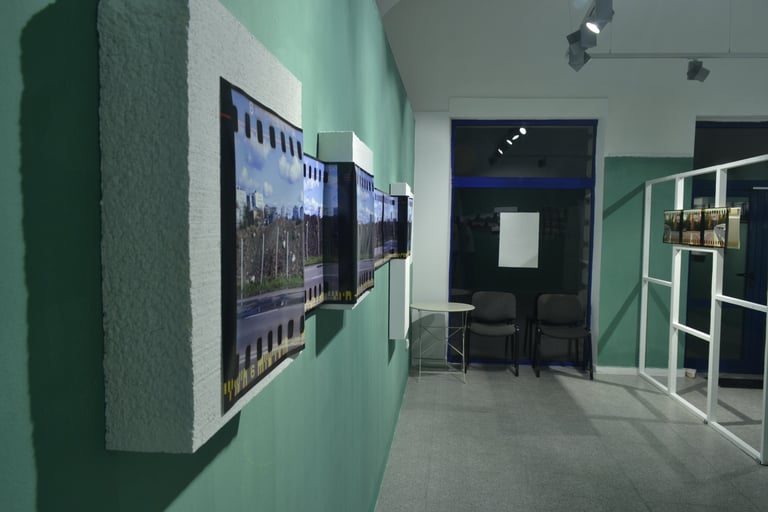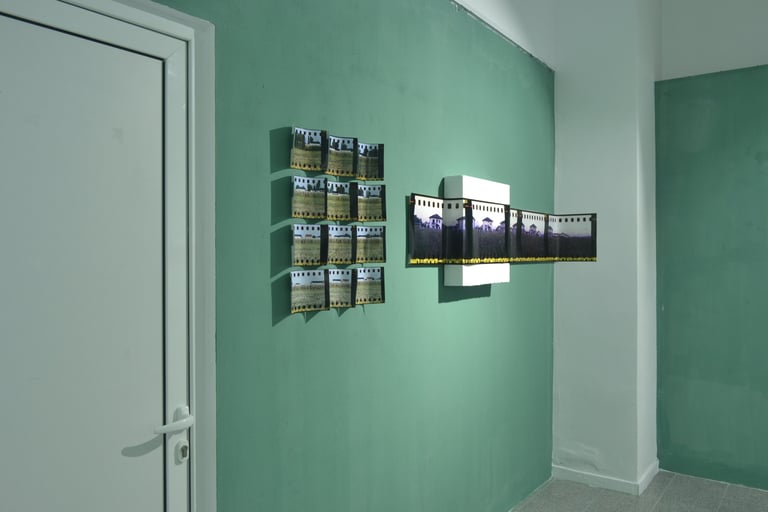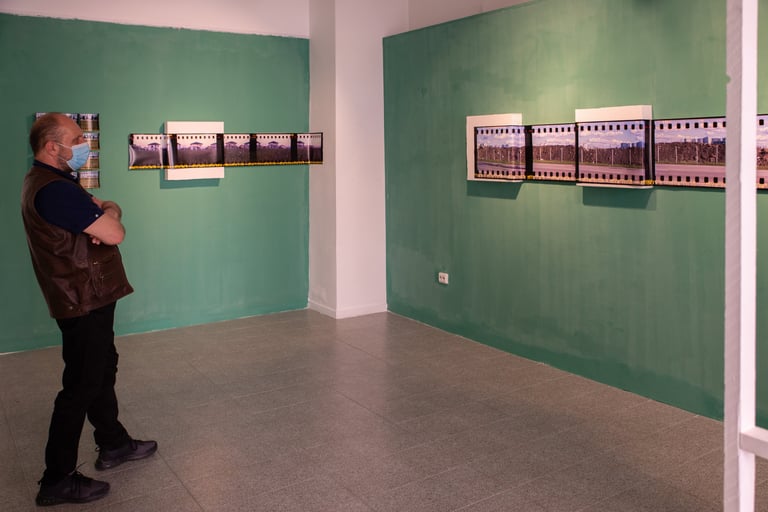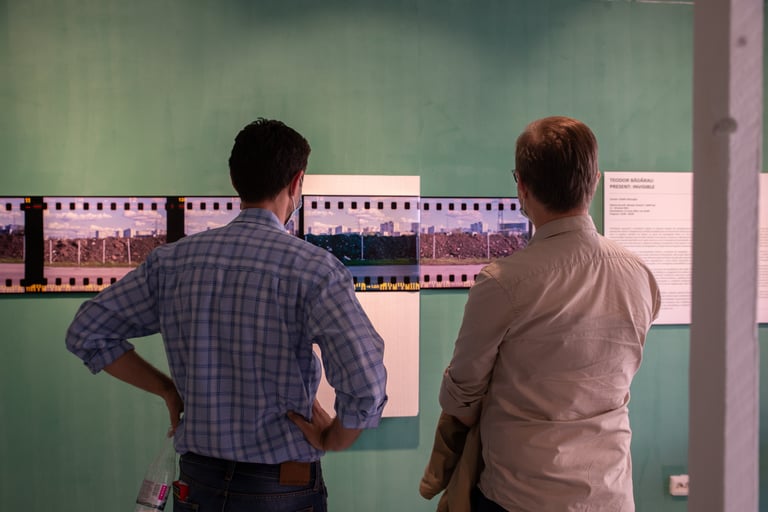Present: invisible
The apparent change in urban cohabitation subscribes to the way of (self)structuring a landscape, roughly mentally. Photography makes it possible to de-document the experience of going through a space that, in the quality of its feeling, becomes a point of convergence between a way of conceiving the transversality of the message of an artistic research and a way of working together with the effects of post-photography. In a sequence inherent in the assembly of stage frames and meta-frames of the representation, through a transversion of a context through immersive acts and reflections of detachment, the present is associated with an aura of invisibility that shorts the meaning of the act of photographing and the message of the rhetoric of exposing its consequences.
In his research practice of technical re-functionalization of the camera, of the recontextualization of the environment traveled (through a social reflection, extended to fictionalization, both on the observations mediated by the inflections of daily life and by the experimental and conceptual use of the camera) and of the ways of installation/exhibition assembly of some of the elements of the research, Teodor Bădărău transforms invisibility, as a public secret, in a stringency of presentation and public judgment.
At the level of its observational meta-course, structured by the identification of a repetitive double value of photographic images and the condition of habitation, Teodor Bădărău engages in a critical approach regarding the visual deconstruction of a false discourse of the transformation of social comfort by moving from collective urban dwellings to peri-urban single family dwellings. According to the artist, the "bedroom neighborhoods" structured on the vertical of the blocks in the urban context are transmuted into the "residential neighborhoods" structured on the horizontal of the metropolitan areas, while keeping the pattern of conglomerate housing, but continuously exploited financially.
At the level of his professional meta-discourse, Teodor Bădărău uses the photographic camera not only as a tool for analyzing the mix of topics of the exhibition (reflections on the context of construction, habitation and urban mobility, on the movement of the photographer in the photographed landscape, on the deconstruction of temporality through spatial sequencing, on the functions of reading the landscape by the way of installing the photographic assemblies, etc.), but also as a symbolic index of resignification of the modes of image production based on accelerated technological transformations in recent years.
Teodor Bădărău hijacks the programmed functionality of the camera by using a 35 mm film in a box designed for 120 mm film, which generates obtaining an atypical photographic frame without structurally altering the technology of the camera. In his artistic research, both by speculating the function of the photographic camera to alter the perception of the image and by the method of photographing, which relativizes the principle of producing linear perspectives, it is intervened both technically and reflexively on the condition of the photographic space which includes the perforated edges and the technical inscriptions of the 35 mm film as witnesses to the expansion of perception, in an attempt to index the actual, circular space of the image.
The perforations on the edge of the photographic images, obtained by the full scanning of the photographic cliché, are symbolically capitalized in their sense of "holes in the reality of the image". From the viewer's perspective, you either penetrate into the depth of the invisible sense of the photographic assembly, or you keep yourself cautiously at the surface of the image by accepting the reality represented by the photographic environment.
Teodor Bădărău is also interested in a reconsideration of the conceptual historicization of photography and photographic technology (from the darkroom and daguerreotype to the revolution of digitization and objectification of photography), as well as in the criticism of aesthetic difference by approaching amateur photography practices (which involve the use of cheap films, the outsourcing of development, the assumption of errors in the images obtained, respectively of the scratches on film, of color shifts due to temperature or the quality of chemicals) in relation to the professional practices of obsession with control over technical processes and photographic image quality that can degenerate into a sentimental or commercial fetishization of the image-as-object. For Teodor Bădărău, the image is a vehicle for mediating ideas and not instantiating an end in itself. Entering the exhibition may leave the impression of entering the spirit of a landscape, both familiar and eerie, but it is more than a permission to enter the mind of an artist, but rather in a digital and cinematic darkroom where what is invisible is only present.
Cătălin GHEORGHE, Iași, 2021



